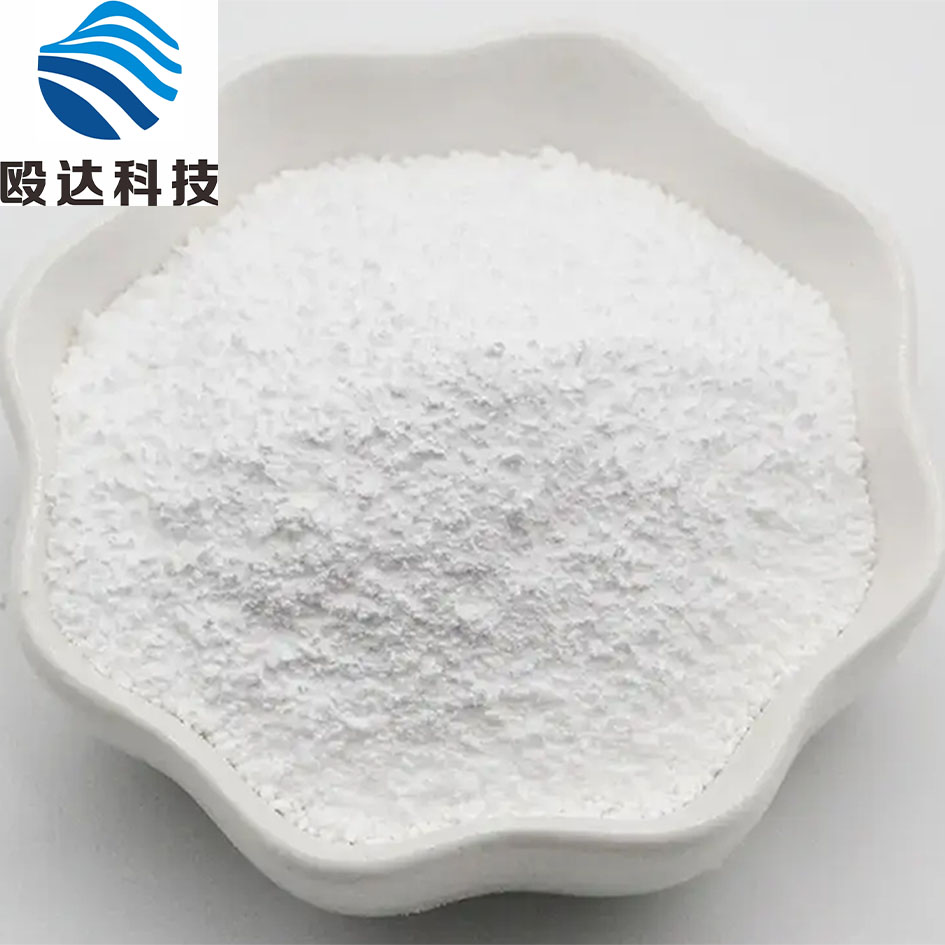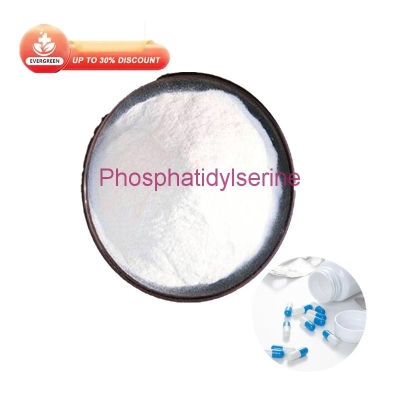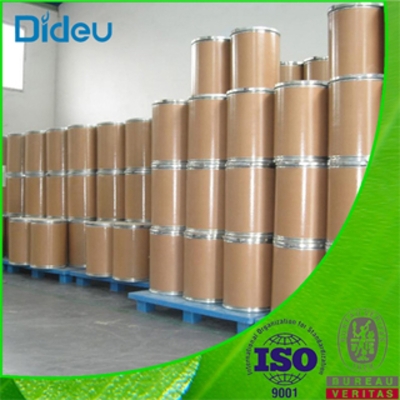-
Categories
-
Pharmaceutical Intermediates
-
Active Pharmaceutical Ingredients
-
Food Additives
- Industrial Coatings
- Agrochemicals
- Dyes and Pigments
- Surfactant
- Flavors and Fragrances
- Chemical Reagents
- Catalyst and Auxiliary
- Natural Products
- Inorganic Chemistry
-
Organic Chemistry
-
Biochemical Engineering
- Analytical Chemistry
- Cosmetic Ingredient
-
Pharmaceutical Intermediates
Promotion
ECHEMI Mall
Wholesale
Weekly Price
Exhibition
News
-
Trade Service
Pharmaceutical grade ethyl paraben cas120-47-8 uses Trade name: ethyl paraben
.
Drug name: ethyl hydroxybenzoate
.
[Molecular formula]: C9H10O3 [Molecular weight]: 166.
18 [CAS number]: 120-47-8 [EINECS number]: 204-399-4 [Physical and chemical properties]: white crystal, slightly bitter taste, burning numb, easily soluble in alcohol, Ether and acetone, almost insoluble in water, boiling point 297-298 【Uses】: This product is mainly used as a bactericidal preservative for food, cosmetics, medicine, and also a feed preservative
.
【Check】Acidity: Take 2.
0ml of the solution under the clarity and color of the solution, add 2ml of ethanol and 5ml of water, shake well, add 2 drops of bromocresol green indicator solution, and titrate with sodium hydroxide titration solution (0.
1mol/L) When it turns blue, the volume of sodium hydroxide titration solution (0.
1mol/L) should not exceed 0.
1ml
.
The clarity and color of the solution take 1.
0g of this product, add 10ml of ethanol to dissolve it, and check it according to the law (general rule 0901 and general rule 0902), the solution should be clear and colorless; General Principle 0901 The first method) comparison shall not be deeper
.
For chloride, take 2.
0g of this product, add 50.
0ml of water, heat it in a water bath at 80°C for 5 minutes, let it cool, and filter; Liquid comparison should not be more concentrated (0.
035%)
.
Sulfate Take 25.
0ml of the continuous filtrate under the chloride item and check according to the law (General Rule 0802).
Compared with the control solution made of 2.
4ml of standard potassium sulfate solution, it should not be more concentrated (0.
024%)
.
Take an appropriate amount of this product for related substances, accurately weigh it, add mobile phase to dissolve and quantitatively dilute to make a solution containing about 1mg per 1ml, as the test solution; accurately measure 1ml, put it in a 100ml measuring bottle, and dilute it with mobile phase To the mark, shake well, as a reference solution; take an appropriate amount of parahydroxybenzoic acid reference substance, accurately weigh, add mobile phase to dissolve and quantitatively dilute to make a solution containing about 3 μg per 1ml, as a reference substance solution; accurately measure the control Put 5ml of the product solution in a 50ml volumetric flask, dilute to the mark with mobile phase, shake well, and use it as a sensitivity solution
.
According to the chromatographic conditions under the content determination item, inject 20 μl of the sensitivity solution into the liquid chromatograph, and the signal-to-noise ratio of the p-hydroxybenzoic acid peak should be greater than 20
.
Then precisely measure 20 μl of the test solution, the reference solution and the reference solution, respectively, inject them into the liquid chromatograph, and record the chromatogram to 4 times the retention time of the main peak
.
If there is a peak consistent with the retention time of the p-hydroxybenzoic acid peak in the chromatogram of the test solution, the peak area should not exceed 0.
3% according to the external standard method, and the peak area of other single impurities should not be greater than 0.
4 times the main peak area of the control solution ( 0.
4%), the sum of the peak areas of each impurity shall not be greater than 0.
8 times (0.
8%) of the main peak area of the control solution
.
Weight loss on drying Take this product, put it in a silica gel desiccator, and dry it under reduced pressure to constant weight.
The weight loss should not exceed 0.
5% (General Rule 0831)
.
Residue on ignition Take 1.
0g of this product and inspect it according to the law (General Rule 0841), and the residual residue should not exceed 0.
1%
.
Heavy metals Take the remaining residues under the item of residues on ignition, and inspect them according to the law (the second method of general rule 0821), and the heavy metals shall not exceed 10 parts per million
.
Arsenic salt take 2.
0g of this product, add 1.
0g of calcium hydroxide, mix, add a small amount of water, stir to make it uniform, after drying, first burn with a small fire to carbonize, then burn at 500~600℃ to completely ashing, put it in Cold, add 5ml of hydrochloric acid and 23ml of water, check according to the law (the first method of General Principle 0822), it should meet the regulations (0.
0001%)
.
Drug name: ethyl hydroxybenzoate
.
[Molecular formula]: C9H10O3 [Molecular weight]: 166.
18 [CAS number]: 120-47-8 [EINECS number]: 204-399-4 [Physical and chemical properties]: white crystal, slightly bitter taste, burning numb, easily soluble in alcohol, Ether and acetone, almost insoluble in water, boiling point 297-298 【Uses】: This product is mainly used as a bactericidal preservative for food, cosmetics, medicine, and also a feed preservative
.
【Check】Acidity: Take 2.
0ml of the solution under the clarity and color of the solution, add 2ml of ethanol and 5ml of water, shake well, add 2 drops of bromocresol green indicator solution, and titrate with sodium hydroxide titration solution (0.
1mol/L) When it turns blue, the volume of sodium hydroxide titration solution (0.
1mol/L) should not exceed 0.
1ml
.
The clarity and color of the solution take 1.
0g of this product, add 10ml of ethanol to dissolve it, and check it according to the law (general rule 0901 and general rule 0902), the solution should be clear and colorless; General Principle 0901 The first method) comparison shall not be deeper
.
For chloride, take 2.
0g of this product, add 50.
0ml of water, heat it in a water bath at 80°C for 5 minutes, let it cool, and filter; Liquid comparison should not be more concentrated (0.
035%)
.
Sulfate Take 25.
0ml of the continuous filtrate under the chloride item and check according to the law (General Rule 0802).
Compared with the control solution made of 2.
4ml of standard potassium sulfate solution, it should not be more concentrated (0.
024%)
.
Take an appropriate amount of this product for related substances, accurately weigh it, add mobile phase to dissolve and quantitatively dilute to make a solution containing about 1mg per 1ml, as the test solution; accurately measure 1ml, put it in a 100ml measuring bottle, and dilute it with mobile phase To the mark, shake well, as a reference solution; take an appropriate amount of parahydroxybenzoic acid reference substance, accurately weigh, add mobile phase to dissolve and quantitatively dilute to make a solution containing about 3 μg per 1ml, as a reference substance solution; accurately measure the control Put 5ml of the product solution in a 50ml volumetric flask, dilute to the mark with mobile phase, shake well, and use it as a sensitivity solution
.
According to the chromatographic conditions under the content determination item, inject 20 μl of the sensitivity solution into the liquid chromatograph, and the signal-to-noise ratio of the p-hydroxybenzoic acid peak should be greater than 20
.
Then precisely measure 20 μl of the test solution, the reference solution and the reference solution, respectively, inject them into the liquid chromatograph, and record the chromatogram to 4 times the retention time of the main peak
.
If there is a peak consistent with the retention time of the p-hydroxybenzoic acid peak in the chromatogram of the test solution, the peak area should not exceed 0.
3% according to the external standard method, and the peak area of other single impurities should not be greater than 0.
4 times the main peak area of the control solution ( 0.
4%), the sum of the peak areas of each impurity shall not be greater than 0.
8 times (0.
8%) of the main peak area of the control solution
.
Weight loss on drying Take this product, put it in a silica gel desiccator, and dry it under reduced pressure to constant weight.
The weight loss should not exceed 0.
5% (General Rule 0831)
.
Residue on ignition Take 1.
0g of this product and inspect it according to the law (General Rule 0841), and the residual residue should not exceed 0.
1%
.
Heavy metals Take the remaining residues under the item of residues on ignition, and inspect them according to the law (the second method of general rule 0821), and the heavy metals shall not exceed 10 parts per million
.
Arsenic salt take 2.
0g of this product, add 1.
0g of calcium hydroxide, mix, add a small amount of water, stir to make it uniform, after drying, first burn with a small fire to carbonize, then burn at 500~600℃ to completely ashing, put it in Cold, add 5ml of hydrochloric acid and 23ml of water, check according to the law (the first method of General Principle 0822), it should meet the regulations (0.
0001%)







